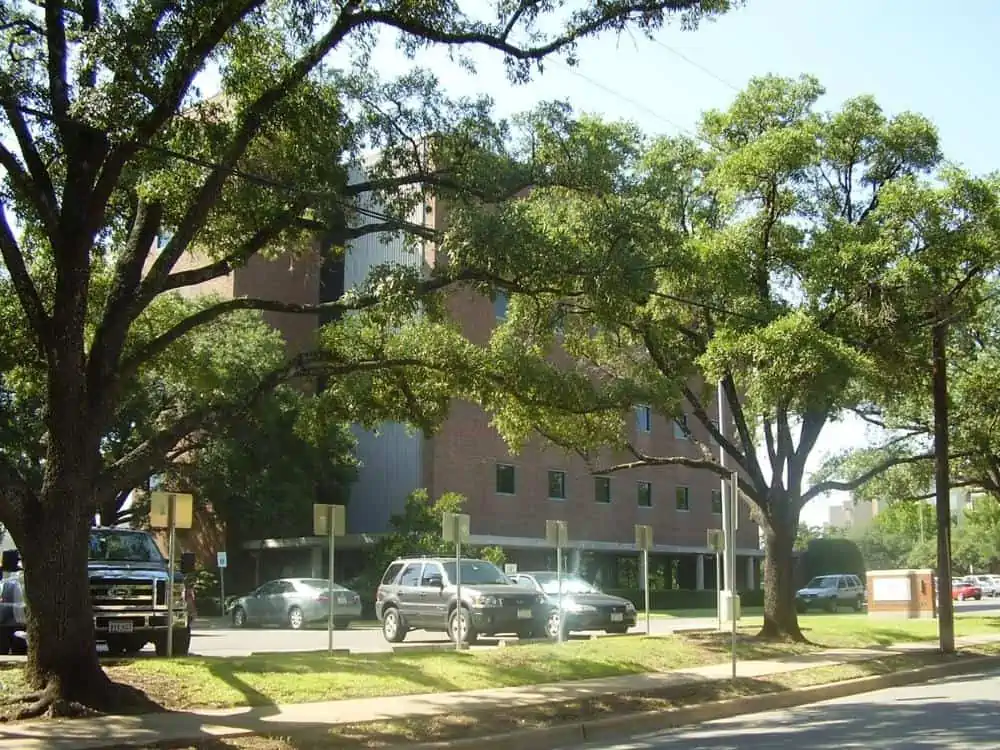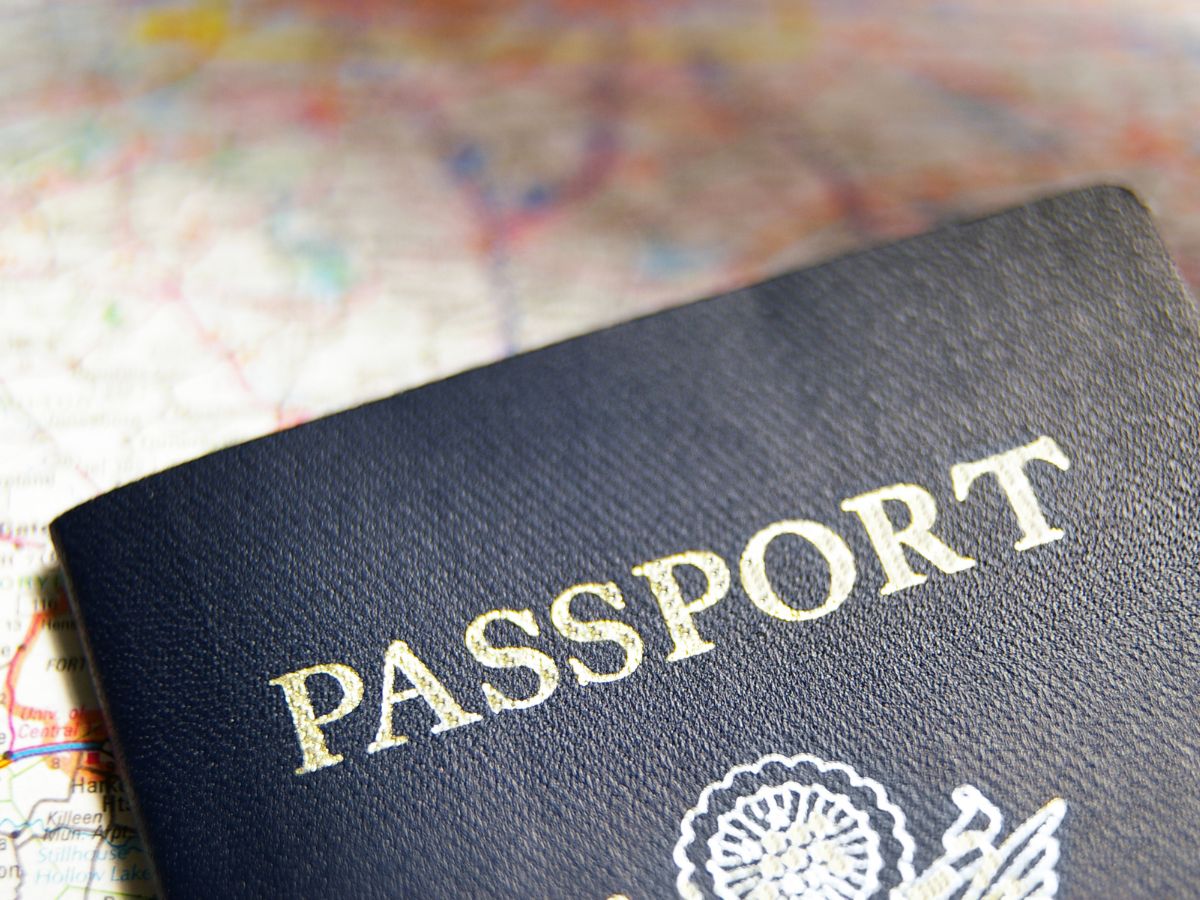Share the post "Age To Get a Texas ID (Types + Application)"
Before you know it, your son or daughter is ready to get their state ID for driving or identification.
They’re ready, but are you? It can be overwhelming figuring out and sorting out what is needed. You probably have a ton of questions, but you’re not alone. Millions of parents have been in or are in the same boat as you.
How young can you be to get a Texas ID is probably your first question. The answer would be what type of ID card you are looking for. Is it an ID card, a permit, or a driver’s license? Let’s dive in and find out.
Key Points:
- The minimum age for a Texas ID card depends on the type of ID being applied for.
- Texas offers a variety of ID cards, including driver’s licenses, personal identification cards, and learner’s permits.
- Individuals must provide proof of identity, Social Security Number, and Texas residency to obtain a Texas ID card.
- Texas ID cards are acceptable for various purposes, including travel, voting, and accessing age-restricted places.
- Individuals with disabilities have specific considerations and accommodations when applying for a Texas ID card.

- What is a Texas ID card?
- Different Types of Texas ID cards Available
- What Are the Requirements for a Texas ID Card?
- Eligibility criteria for obtaining each type of Texas ID
- How Does a Young Person Get a Texas ID Card?
- The Process and Requirements for Obtaining a Texas Learner's Permit
- Where Do I Go To Get a Texas ID?
- What if You Need To Renew or Replace My Texas ID?
- How Much Does a Texas ID Cost?
- Are Texas ID Cards Acceptable Everywhere?
- How to Update or Change Information on A Texas Id Card
- Considerations for Individuals with Disabilities Applying for A Texas ID Card
- Next Steps
What is a Texas ID card?
Let’s start with getting just a regular Texas ID.
The Texas ID card looks very similar to a driver’s license and provides the same information a driver’s license has, including a photo. It is used solely for identification purposes, such as traveling or showing ID at various places. It’s used by those who can’t drive or choose not to.
Your child can use them for proof of age, to gain access to certain age-restricted places or for public assistance needs. The Texas Department of Public Safety (DPS) provides state ID cards to any lawful resident. There are certain restrictions for non-residents and foreign students.
Most ID cards are available to youths. Another benefit of IDs is they tend to cost less than a driver’s license and are valid longer than a driver’s license.
Different Types of Texas ID cards Available
Texas offers a variety of identification cards to cater to the diverse needs of its residents. Here are the main types of ID cards available in Texas:
- Texas Driver License (DL): This is the standard identification used for operating vehicles. It can be obtained after passing written and road tests.
- Texas Personal Identification Card (ID): For those who don’t drive or don’t wish to get a driver’s license, the Texas Department of Public Safety (DPS) issues a Personal Identification Card. It provides the same identification functions as a driver’s license but doesn’t grant driving privileges.
- Texas Election Identification Certificate (EIC): If a Texas resident doesn’t have any other form of photo ID required for voting and can’t reasonably obtain one, they may be eligible for an EIC, an acceptable form of ID for voting purposes.
- Texas Handgun License: Formerly known as the Concealed Handgun License (CHL), this identification allows qualified individuals to carry concealed weapons or open carry, depending on the permissions.
- Texas Commercial Driver License (CDL): For individuals who operate commercial vehicles. There are different classes of CDLs depending on the type of commercial vehicle being used.
- Texas Learner License (LL): Also known as a learner’s permit, this ID allows teens and adults to practice driving before obtaining a full driver’s license.
- Special Condition IDs: Some driver’s licenses and state ID cards may have special conditions or restrictions based on the individual’s driving test results or other factors.
- Temporary Visitor Driver Licenses and IDs: For non-U.S. citizens who have lawful temporary status, Texas issues Temporary Visitor Driver Licenses and Identification Cards.
- Texas Veteran Designation: Eligible veterans can have a veteran designation on their driver’s license or ID card.
- Texas Travel IDs comply with the federal REAL ID Act, making them suitable for domestic air travel.
- Texas Provisional License: This is a stage between the learner license and the full, unrestricted license for young drivers, typically those under 18.
- Texas Motorcycle License: For those who wish to operate motorcycles. This can be an endorsement on a regular driver’s license or a standalone license for those who only use motorcycles.
Remember, while some IDs can be used for multiple purposes like voting, purchasing alcohol, or boarding domestic flights, others serve very specific functions. Always refer to the Texas Department of Public Safety or the relevant state agency for detailed, up-to-date requirements and eligibility criteria for each ID type.

What Are the Requirements for a Texas ID Card?
A young person looking for a Texas ID must be a Texas resident for at least 30 days, except for military personnel dependents. There is no minimum age restriction on IDs for young people in Texas.
Many parents purchase IDs for their young children for school and emergencies. In case of an emergency, the child has a photo ID card that will identify them, along with other pertinent information to help authorities locate their parents or address.
Texas has a restriction you must know before applying for a new ID. If you hold a driver’s license in another state, you cannot apply for a Texas ID card unless you forfeit the license in another state. It is illegal in Texas to hold a driver’s license and a state ID card.
Eligibility criteria for obtaining each type of Texas ID
In Texas, there are several types of identification cards, each with its own set of eligibility criteria. Here’s a general overview of the most commonly issued types of ID and their respective eligibility requirements:
Texas Identification Card
- General Eligibility:
- Must be a Texas resident.
- Must be at least 13 years old.
- Documentation:
- Proof of identity, Social Security Number, and Texas residency.
- Minors:
- Applicants under 18 need parental consent.
Texas Driver License
- General Eligibility:
- Must be at least 16 years old (or 15 with a completed driver education course).
- Must be a Texas resident.
- Documentation:
- Proof of identity, Social Security Number, and Texas residency.
- Additional Requirements:
- Must pass vision, written, and driving tests.
Texas Commercial Driver License (CDL)
- General Eligibility:
- Must be at least 21 years old for interstate driving, or at least 18 for intrastate.
- Must be a Texas resident.
- Documentation:
- Proof of identity, Social Security Number, and Texas residency.
- Additional Requirements:
- Must pass vision, written, and skills tests.
- Must possess a regular driver’s license prior to applying.
Texas Motorcycle License
- General Eligibility:
- Must be a Texas resident.
- Documentation:
- Proof of identity, Social Security Number, and Texas residency.
- Additional Requirements:
- Must pass vision, written, and riding skill tests.
- Must possess a regular driver’s license prior to applying, or apply simultaneously.
Texas Handgun License (License to Carry a Handgun)
- General Eligibility:
- Must be at least 21 years old (or 18 if a member of the military).
- Must be a Texas resident for at least six months.
- Documentation:
- Proof of identity, Social Security Number, and Texas residency.
- Additional Requirements:
- Must pass a background check.
- Must complete a handgun proficiency course.
Disabled Veteran or Other Military ID
- General Eligibility:
- Must be a Texas resident.
- Must have proof of honorable discharge or active duty status.
- For disabled veterans, proof of disability is required.
- Documentation:
- Proof of identity, Social Security Number, Texas residency, and military status.
Texas Election Identification Certificate (EIC)
- General Eligibility:
- Must be a Texas resident.
- Must be eligible to vote in Texas (U.S. citizenship is required).
- Documentation:
- Proof of identity and citizenship.
Different forms of ID may have their own unique requirements or limitations, and the requirements can sometimes change. Always check the most current guidelines on the Texas Department of Public Safety (DPS) website or contact them directly for the most accurate and up-to-date information.

How Does a Young Person Get a Texas ID Card?
Before you or your child head out for an ID card, ensure you have these necessary documents. To prove citizenship, you must show a U.S. birth certificate, a U.S. passport, or a Certificate of Citizenship. If you’re a non-U.S. resident, you will need a permanent resident card and a foreign passport with an I-94 stamp or Form I-327.
Other documents needed are a social security card. You can apply for one at the Social Security Administration if you or your child doesn’t have one. You or your child will also need proof of being a Texas resident. For your child, that could be a birth certificate or school documents. For adults, mortgage statements, Texas voter ID, or a health insurance card.
All documents must be originals or certified copies. Photocopies or laminated documents are not acceptable. If your name has changed, you must provide proof of your legal name change.
Last but not least, don’t forget to bring payment for the ID. Please don’t assume cash or checks are accepted. Nowadays, it’s good to bring cash, a check, or a debit or credit card to prevent delays.
The Process and Requirements for Obtaining a Texas Learner’s Permit
Obtaining a Texas Learner’s Permit often referred to as a “learner license” in Texas, is an essential step for young drivers as they begin their journey toward becoming licensed drivers. Here’s an overview of the process and requirements:
- Eligibility:
- The applicant must be at least 15 years old but under 18.
- Enrolled in a driver education course approved by the Texas Department of Licensing and Regulation (TDLR).
- Driver Education:
- Complete the classroom phase of a driver education course before applying for a learner license.
- Required Documentation:
- Proof of identity (e.g., a certified birth certificate).
- Proof of Social Security Number.
- Proof of Texas residency (two valid documents are required).
- Proof of enrollment and attendance or a high school diploma or GED.
- A completed verification of enrollment and attendance (VOE) form (if still in school). This form verifies the applicant is enrolled and attending school.
- A completed application form (available at DPS offices).
- Parent or Guardian:
- A parent or legal guardian must accompany the minor to the Texas DPS office. They need to sign the application form to give their consent.
- Vision Exam:
- Pass a vision exam.
- Knowledge Exam:
- Pass the written knowledge exam covering Texas traffic laws and road signs. If you’ve completed the classroom portion of a driver education course, you may have already taken this test as part of the course. If so, and you passed, you won’t need to retake it at the DPS.
- Application Fee:
- Pay the required application fee. The fee varies depending on age and the type of license. The Texas DPS website provides a list of expenses.
- Restrictions:
- A learner license allows you to drive with a licensed adult 21 years or older in the front passenger seat.
- Holding Period and Next Steps:
- You must hold the learner license for at least six months from the issue date (unless you turn 18 during this period). After this period and upon successful completion of the driver education course, you can apply for a provisional driver’s license. This will involve a behind-the-wheel driving test.
Remember, driving is a privilege, and the Texas Department of Public Safety is responsible for ensuring new drivers are well-prepared. Always refer to the DPS website or contact them directly for the most up-to-date information and any recent changes to the process or requirements.

Where Do I Go To Get a Texas ID?
Simply call or visit your local driver’s license or Department of Motor Vehicle (DMV) to find out where you need to go to get a Texas TD card. Unlike some states, Texas does not allow residents to get an ID online.
However, some DMV offices will allow you to complete the application online and virtually “stand in line” before actually visiting the office.
Once you’re at the DMV office, the process is pretty simple. Provide the clerk with the necessary documents and application. They will help you sort everything out and collect the fee. You will be asked for a thumbprint and your photo will be taken.
You will be provided a temporary document to carry with you as proof until your ID card arrives by mail four to six weeks later.
What if You Need To Renew or Replace My Texas ID?
Let’s face it – young people lose things way too easily. Even some of us adults have trouble keeping track of things important to us. If you or your child loses the ID card, don’t panic. Simply return to the DMV office.
Yes, you’ll have to go through the entire process again – but it’s better than going to the dentist, right? Also, Texas allows certain applicants to renew or replace their lost ID card online or over the phone. If it’s time to renew your ID card, be sure to update any information that may have changed.

How Much Does a Texas ID Cost?
A Texas ID card for youth will cost $16. Your child can get a standard card or a limited-term ID card, whichever fits their situation.
Are Texas ID Cards Acceptable Everywhere?
Yes! Texas ID cards are real and acceptable everywhere. The ID card meets the security standards put in place by the Federal Government (Federal REAL ID Act of 2005).
This means the state ID is Real ID compliant and can be used for any purpose outlined in the Real ID Act, including for travel purposes, including traveling abroad, entering nuclear power plants, entering federal buildings, military bases, cashing checks, and legal documents.
How to Update or Change Information on A Texas Id Card
If you need to update or change your Texas ID card information, you should do so promptly to ensure your identification remains valid and accurate. Here’s a step-by-step guide on how to update or change your information:
- Visit a Texas Department of Public Safety (DPS) Office:
- You’ll typically need to visit a local DPS office in person to make changes to your Texas ID card.
- Bring Required Documentation:
- Different documents may be required Depending on the change you’re making. For instance:
- If you’re changing your name, you might need to bring a marriage certificate, divorce decree, or a court order indicating the name change.
- For an address change, bring proof of your new residence.
- Bring your birth certificate or other valid proof of age for a corrected date of birth.
- Different documents may be required Depending on the change you’re making. For instance:
- Complete the Required Application:
- You may need to fill out an application for a change of information or for a replacement ID card. The specific form can vary based on the type of change.
- Pay the Fee:
- A fee may be associated with updating your ID or obtaining a new ID card with the updated information. Check the Texas DPS website or contact them directly for the current prices.
- Surrender Your Old ID Card:
- In most cases, you’ll be required to surrender your old ID card when receiving a new one with updated information.
- Receive Your New ID Card:
- After processing, you’ll be issued a new Texas ID card with the updated information. Note that while some DPS locations can produce the new ID on-site, others might send it via mail, so you might receive a temporary ID until the permanent one arrives.
- Online and Phone Options for Address Change:
- If you’re only changing your address, Texas DPS might allow you to make this change online or over the phone. Check the Texas DPS website to see if these options are available and if you qualify.
Always refer to the Texas Department of Public Safety’s official website or contact them directly to get the most up-to-date information, specific requirements, and current fees associated with updating your Texas ID card.

Considerations for Individuals with Disabilities Applying for A Texas ID Card
Individuals with disabilities often have specific considerations and requirements when applying for identification. The Texas Department of Public Safety (DPS) acknowledges this and has implemented certain provisions for their convenience. Here are some special considerations or requirements for individuals with disabilities applying for a Texas ID card:
- Fee Exemptions:
- Some individuals with disabilities may be eligible for an exemption from the fee typically associated with obtaining a Texas ID card. The exact criteria for this exemption can be found on the Texas DPS website or by contacting them directly.
- Proof of Disability:
- To qualify for certain exemptions or accommodations, applicants may need to provide proof of their disability. This could be in the form of medical documentation, documentation from a recognized agency, or other relevant evidence.
- Accessible Facilities:
- DPS offices are typically designed to be accessible to people with disabilities. This includes wheelchair ramps, accessible restrooms, and other ADA-compliant facilities.
- Accommodations for Testing:
- If the individual is also applying for a learner’s permit or driver’s license, accommodations for vision or knowledge tests may be available. It’s advisable to notify the DPS to ensure any necessary arrangements are made.
- Assistance During Application:
- Individuals with disabilities can have someone assist them with completing their application if needed. The assisting party may need to provide their own identification and possibly sign the application form, attesting to the accuracy of the information.
- Communication Considerations:
- DPS offices may provide sign language interpreters for individuals with hearing impairments upon request. If you require this service, scheduling your appointment in advance and informing the DPS of your needs is best.
- Service Animals:
- Service animals accompanying individuals with disabilities are typically allowed in DPS offices.
- Extended Expiration:
- Under certain conditions, Texas ID cards for individuals with specific medical conditions or disabilities may have extended expiration dates, reducing the frequency with which they need to renew.
- Special Condition Indicators:
- The ID card can have special indicators for specific medical conditions or disabilities. This can be helpful for emergency responders or medical personnel in case of emergencies.
It’s always a good idea to contact your local Texas DPS office in advance if you have specific needs or concerns. This makes them better prepared to assist you and ensures a smoother application process.
Always check the official Texas DPS website or contact them directly for the most up-to-date information on the application process and any accommodations or considerations for individuals with disabilities.
Next Steps
If you’re ready to take the next steps in obtaining a Texas ID, here are some resources and links that can help you:
- Texas Department of Public Safety (DPS) Website: The official website of the Texas DPS provides comprehensive information on all types of identification cards, including driver’s licenses, personal identification cards, and learner’s permits. Visit their website for the most up-to-date information, requirements, and forms: Texas DPS Website
- Texas ID Card Application Form: You can download the application form for a Texas ID card directly from the Texas DPS website. Here is the link to the application form: Texas ID Card Application Form
- Texas DPS Office Locator: Use the Texas DPS Office Locator tool to find the nearest DPS office where you can apply for a Texas ID card. Enter your zip code or city to find the closest office: Texas DPS Office Locator
- Texas DPS Online Services: Some services, such as address changes, may be available online. Visit the Texas DPS Online Services page to see if you can complete certain tasks online: Texas DPS Online Services
- Texas DPS Fees: The Texas DPS website provides a detailed list of fees associated with obtaining a Texas ID card. You can find the current fees for different types of IDs on their website: Texas DPS Fees
Remember to always refer to the official Texas DPS website or contact them directly for the most accurate and up-to-date information regarding the application process, requirements, fees, and any recent changes.
Share the post "Age To Get a Texas ID (Types + Application)"
Christian Linden is a seasoned writer and contributor at Texas View, specializing in topics that resonate with the Texan community. With over a decade of experience in journalism, Christian brings a wealth of knowledge in local politics, culture, and lifestyle. He holds a Bachelor's degree in Communications from the University of Texas. When he's not writing, Christian enjoys spending weekends traveling across Texas with his family, exploring everything from bustling cities to serene landscapes.











